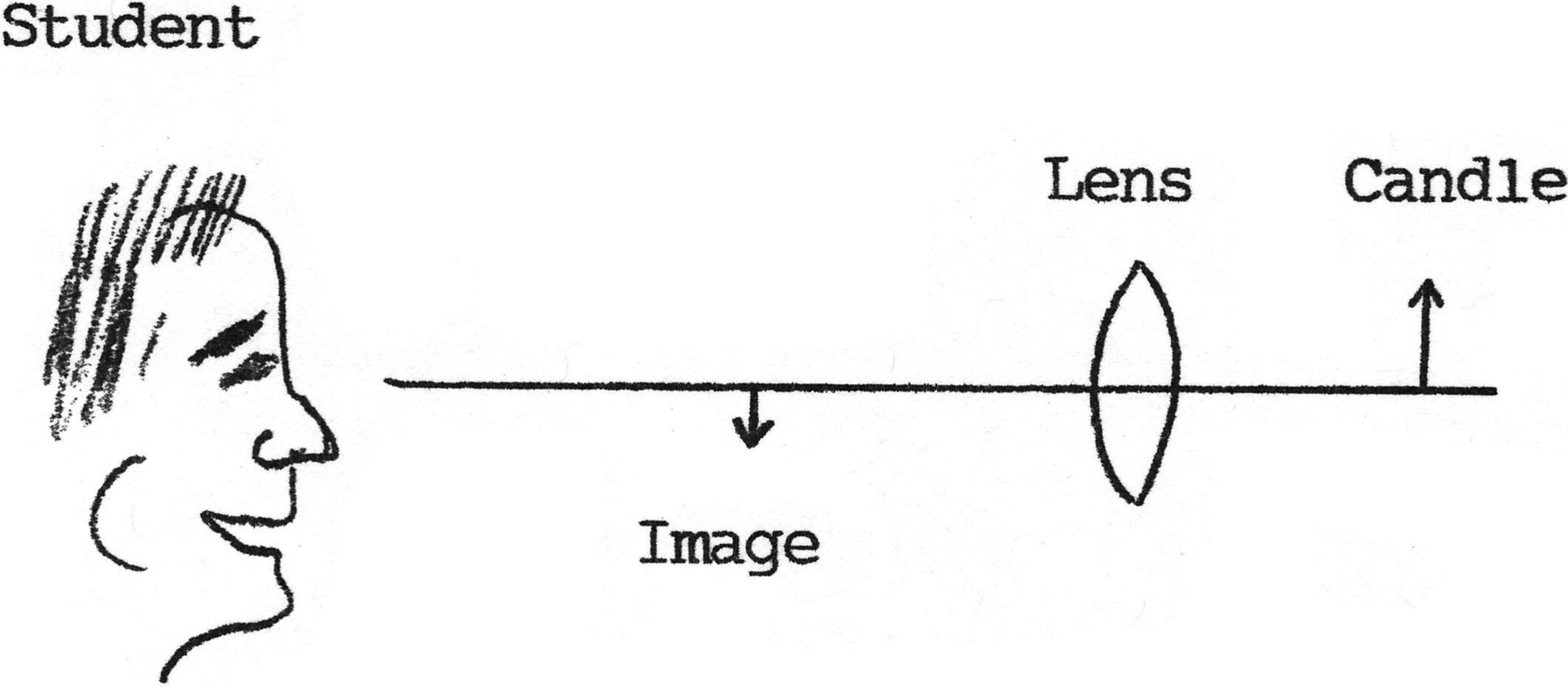Parallax and Images
March 01, 1992 Filed in:
Demo CornerT.J. Elgin Wolfe, Faculty of Education, University of Toronto
Parallax
Parallax is the apparent motion of one object with reference to a second object caused by a change in position of the viewer. Involve the class in the following way to introduce this concept.
Have each student extend his/her right arm horizontally to arms length with the thumb pointing upward. Then extend her/his left arm to half arms length with the left thumb pointing downward. With one eye open, have the student align the thumbs. Tell them to move their heads to the left and then to the right and describe what they see. When the head is moved to the left, the near thumb will appear to move to the right against the background of the far thumb.
Introduce the definition of parallax. Then ask students to repeat the process as they move the nearer thumb closer and closer to the far thumb. Establish that, when the two thumbs are at the same position with reference to the eye (but one above the other), there will be no apparent shifting of two thumbs with reference to one another when the head is moved from side to side.
Zero-parallax and Virtual Images
The method of zero-parallax can be used to locate virtual and real images formed by mirrors and lenses. To demonstrate the method of zero-parallax for plane mirrors, place a candle about 20 cm in from of a large pane of clean glass. The virtual image of the candle will appear behind the plane mirror (glass). Use a finder candle the same size and shape as the object candle to locate the image. Begin with the finder candle behind the glass and off to the side of the image, but position it closer to the glass than the virtual image. Have a student sitting on the right side of the class tell you how far to move the finder candle parallel to the glass until the finder candle and the virtual image coincide. Then have a student sitting on the left side of the class tell you how far to move the finder candle back and forth perpendicular to the glass until the finder candle and the virtual image coincide from this location. Continue the process until the finder candle and the virtual image coincide from both locations. The finder candle and the virtual image must then be at the same location because there is zero-parallax between the two. Have students walk slowly across the back of the room to verify that the finder candle and the virtual image do not shift with reference to each other as they move.
Seeing a Real Image Suspended in Space
Students know how to locate the real image formed by a converging mirror or lens by “catching” it on a paper screen. But when they remove the screen and look at the real image from some distance from the lens or mirror, they think they see the image in the instrument rather than inverted in space between their eye and the instrument. To help them visualize the suspended inverted image, and to illustrate the method of zero-parallax for locating real images, proceed as follows.
Position the student along the principal axis of the optical bench system as shown. “Catch” the real image formed by the mirror or lens on a small paper screen. Have the student look at the image on the paper screen from the side of the screen opposite the instrument. Shift the screen up and down until half the image is caught on the screen and half is suspended in space. Have the student look at both parts of the image and move his/her head from side to side to see that the half of the image caught on the paper screen and the half suspended in space do not shift with reference to each other. Then slowly remove the screen completely. The student will see an inverted real image suspended in space between the eye and the instrument, not “in the instrument.”

Column Editor: Ernie McFarland, Physics Department, University of Guelph, Guelph, Ontario, N1G 2W1 Tags: Optics


